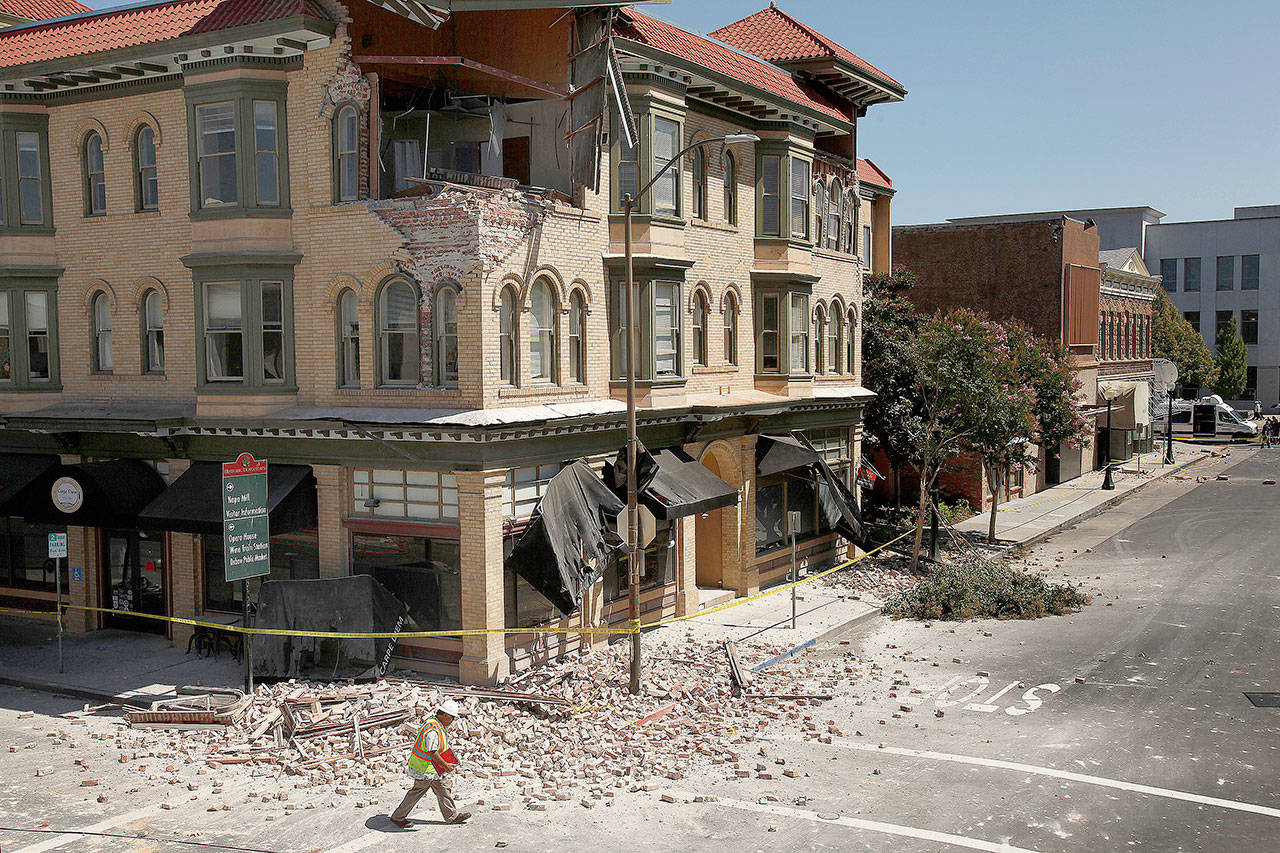By Rong-Gong Lin Ii
Los Angeles Times
LOS ANGELES — Members of Congress on Wednesday are expected to approve a new budget plan that would maintain funding for a West Coast earthquake early warning system that President Donald Trump’s budget sought to slash.
A House of Representatives subcommittee is proposing that $10.2 million be allocated to the early warning system — the same amount as the network received in the last budget. Stable funding is needed if U.S. officials are to begin limited public operation of the early warning system by the end of next year.
“We have made too much progress on the earthquake warning system to stop now,” Rep. Ken Calvert, R-Calif., chairman of the subcommittee, said. “I don’t think there is any appetite, at least from the House in Congress, to remove it.
“I want to make sure that nothing puts a stop to it,” Calvert said.
The 11-member House appropriations subcommittee overseeing the Department of the Interior and the Environmental Protection Agency is expected to approve the budget proposal Wednesday afternoon.
After Wednesday’s vote, the budget proposal will still need to be voted on by the full House appropriations committee, and eventually, the House of Representatives and Senate before it can be signed by Trump. The next fiscal year begins Oct. 1.
Rep. Adam Schiff, D-Calif., said in a statement that the proposal represents “a rare sign of bipartisanship in Washington,” and said Calvert “deserves a great deal of credit” for protecting the system.
“In rebuffing the president’s request to eliminate funding for the system, Congress is showing its strong support for the system will not wane,” Schiff said.
A seismic early warning system for the West Coast has been under development for years by the U.S. Geological Survey, the nation’s lead earthquake monitoring agency. Trump’s budget would have ended the system before it launched. Officials were looking for “sensible and rational reductions and making hard choices to reach a balanced budget by 2027,” according to the administration’s proposal.
The administration’s budget was based on a decision to focus on the USGS’ core capabilities — services already offered, instead of something new, such as the earthquake early warning system.
But the proposal to end the funding raised bipartisan complaints across the West Coast. Twenty-eight lawmakers in the California Legislature, including leaders from both parties, have urged Calvert to protect the earthquake early warning system. Members of Congress from Southern California to the Canadian border say the system is crucial to public safety.
“Even just a few seconds of warning before a major earthquake can save a lot of lives. That’s why it’s been a bipartisan effort … to develop a functional earthquake warning system,” Calvert said.
Already, technology is being designed to allow early warnings to cause elevators to open at the next floor, sparing occupants from being trapped; alerts to tell surgeons to remove scalpels from patients; and processes that could halt the flow of natural gas through major pipelines, preventing catastrophic fires.
“We always wanted to make sure that it’s the real thing; we don’t want to have any false alarms. So we’ve gone a long ways now, which we now think it’s to the point where it’s a functional system and it will work,” Calvert said.
The system works on a simple principle: The shaking from an earthquake travels at the speed of sound through rock — slower than the speed of today’s communications systems. That means it would take more than a minute for, say, a magnitude 7.8 earthquake that starts at the Salton Sea to shake up Los Angeles, 150 miles away, traveling on the state’s longest fault, the San Andreas.
Countries around the world have implemented earthquake early warning systems, such as Mexico and Japan. During the 2011 magnitude 9 Japan earthquake, viewers in Tokyo watching an NHK television channel that blared the early warning had more than a minute of notice before the strongest shaking arrived.
Along the West Coast, facilities of all types are already testing the earthquake early warning system, including airports, hospitals, oil refineries, pipelines, schools and universities.
In Los Angeles County, Metro rail drivers are now trained to stop trains when they hear word of an earthquake early warning from the control center. Slowing and stopping subway cars and light rail trains reduces the threat of derailment.
Los Angeles Mayor Eric Garcetti in his State of the City address said that, by the end of 2018, there would be a deployment of “an earthquake early warning system to every corner of this city — in schools, at businesses, even on your smartphone. It will give you a head start when an earthquake is coming — precious seconds that save lives.”
Experts have said it would make sense for officials to begin a limited public rollout of the early warning system in Los Angeles. Along the West Coast, Southern California has the densest network of seismic sensors needed to operate it.
The system needs $38.3 million to be fully built out and $16.5 million a year to be operated and maintained across the West Coast, according to estimates. The federal government has already invested $23 million in the system; California lawmakers and Gov. Jerry Brown last year approved $10 million. Los Angeles has also directed money for the installation of seismic sensors in Southern California.
Overall, the House appropriations subcommittee penciled in $1 billion for the USGS — $46 million below what the agency received in the last budget. The Trump administration called for a $137.8 million cut.
Further details about the USGS budget are expected to be made public next week, when the full Appropriations Committee is set to hold a vote.


